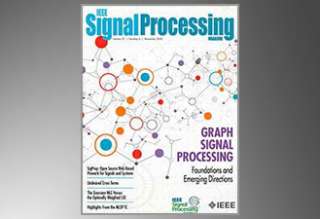SPS Feed
Top Reasons to Join SPS Today!
1. IEEE Signal Processing Magazine
2. Signal Processing Digital Library*
3. Inside Signal Processing Newsletter
4. SPS Resource Center
5. Career advancement & recognition
6. Discounts on conferences and publications
7. Professional networking
8. Communities for students, young professionals, and women
9. Volunteer opportunities
10. Coming soon! PDH/CEU credits
Click here to learn more.
The Latest News, Articles, and Events in Signal Processing

- Lab: L2S, CentraleSupélec 3 rue Joliot Curie, 91192 Gif-sur-Yvette, France
- Supervisors: Gilles Chardon (gilles.chardon@centralesupelec.fr), José Picheral (jose.picheral@centralesupelec.fr)
- Starting date: before december 2022
- Duration: 12 months

Date: June 8, 2022
Time: 4:00 PM (Amsterdam, The Netherlands Time)
Title: Deepfake Detection: Humans vs. Machines
Registration | Full webinar details

3-year Postdoc + PhD students in Network information-theoretic sensor management for multi-target surveillance
These positions are funded by the Centre Interdisciplinaire d’Etudes pour la Défense et la Sécurité, l’Agence de l’innovation de défense (AID), DGA.
Date: October 20, 2022
Chapter: Vietnam
Chapter Chair: Nguyen Ling Trung
Title: Data Fusion Through Matrix and Tensor Decompositions:
Overview of Solutions, Challenges, and Prospects
White Paper Due: July 6, 2022
Publication Date: Mid 2023
CFP Document
Date: October 17, 2017
Time: 11:00 AM ET (New York Time)
Title: Digital Signaling: Interacting Social Sensors and Social Networ
Registration | Full webinar details
Date: November 28, 2018
Time: 11:00 PM ET (New York Time)
Title: 25 Years of Audio Coding...
Registration | Full webinar details
Date: March 21, 2018
Time: 11:00 AM ET (New York Time)
Title: Fundamentals on Signal Processing for Finance and Economics
Registration | Full webinar details
Date: March 15, 2018
Time: 9:00 AM ET (New York Time)
Title: A Tour into Deep Learning: From Its Origins to Cutting Edge Research and Open Challenges
Registration | Full webinar details
Date: August 21, 2018
Time: 12:00 PM ET (New York Time)
Title: Applying Signal Processing and Machine Learning to Finance, Economics, and Marketing
Registration | Full webinar details
Date: October 4, 2018
Time: 11:00 AM ET (New York Time)
Title: 40 Years of Tracking for Radar Systems: A Cross-Disciplinary Academic and Industrial Viewpoint
Registration | Full webinar details
Date: November 19, 2018
Time: 11:00 AM ET (New York Time)
Title: When Quantum-Signal Processing & Communications Meet...
Registration | Full webinar details
Pages
SPS Social Media
- IEEE SPS Facebook Page https://www.facebook.com/ieeeSPS
- IEEE SPS X Page https://x.com/IEEEsps
- IEEE SPS Instagram Page https://www.instagram.com/ieeesps/?hl=en
- IEEE SPS LinkedIn Page https://www.linkedin.com/company/ieeesps/
- IEEE SPS YouTube Channel https://www.youtube.com/ieeeSPS
















